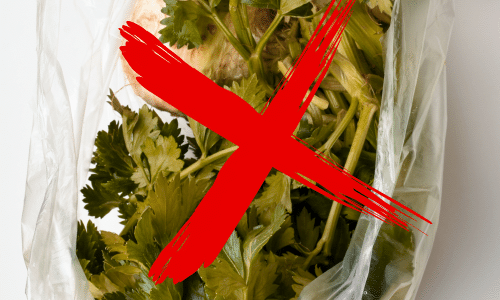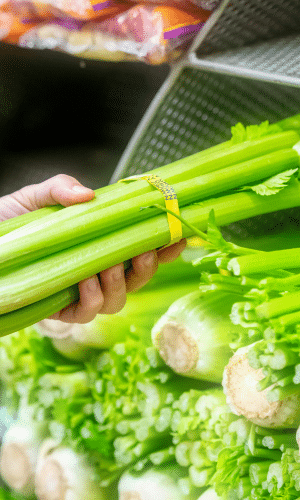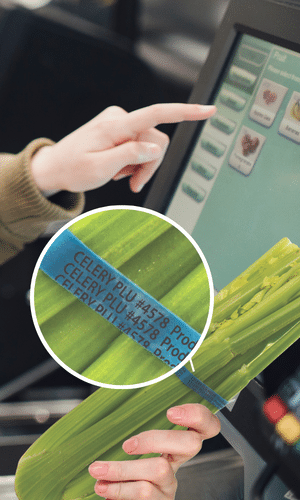 Nothing says “fresh produce” like fresh produce. Take, for example, celery. As you know, celery is a living organism that needs fresh air. When placed inside packaging that blocks oxygen and sunlight it begins to decompose. That’s not good!
Nothing says “fresh produce” like fresh produce. Take, for example, celery. As you know, celery is a living organism that needs fresh air. When placed inside packaging that blocks oxygen and sunlight it begins to decompose. That’s not good!
It’s for that reason that we have decided to jump on the #SaveTheCelery bandwagon and bring awareness to some alternative packaging options! Because as they say, “Celery neglect stops with you!”
What is the alternative?
It seems that just about everywhere you turn, you’ll see celery in the same plastic packaging in a majority of major grocery stores. However, plastic was not the original choice of produce growers, packers, and shippers. You might be surprised to learn that rubber bands reigned supreme for decades before single-use plastic packaging made its way into the market.
Did you know that Alliance is the original pioneer of rubber bands for produce applications? That’s right, we have been providing Agricultural Packaging Products for the industry since 1923!
What makes rubber bands so great?
Produce rubber bands shrink with the product as moisture is lost and maintain a firm, gentle hold. This provides a fresh appearance and requires less maintenance at the store level.
What do consumers prefer?
 Product visibility is highly preferred and consumer studies have shown a clear preference for simplicity. Rubber bands allow the customer to handle and inspect what they plan to buy (with a full 360˚ view) while also protecting it. To entice customers to purchase, retailers aim to carry blemish-free produce with a long shelf life.
Product visibility is highly preferred and consumer studies have shown a clear preference for simplicity. Rubber bands allow the customer to handle and inspect what they plan to buy (with a full 360˚ view) while also protecting it. To entice customers to purchase, retailers aim to carry blemish-free produce with a long shelf life.
Additionally, shoppers are looking for reusable packaging options. One of the questions they might ask before making a purchase is: “Is the packaging reusable or does it contain single-use plastic?” That’s another great characteristic of produce rubber bands: they’re reusable! Consumers will discover hundreds of uses for your produce bands even after your product is gone.
How can produce rubber bands benefit the grocer?
 In grocery stores, produce shrink is nearly double the amount of shrink in other retail outlets. “Shrink” refers to the dollar value of inventory the store technically owns but is unavailable for sale.
In grocery stores, produce shrink is nearly double the amount of shrink in other retail outlets. “Shrink” refers to the dollar value of inventory the store technically owns but is unavailable for sale.
According to The International Fresh Produce Association (IFPA), the average produce department shrink in 2023 was 5.46%. That’s billions of dollars in lost profits for the grocery retail industry.
Going back to our previous example, PLU (price look up) rubber bands for celery are not only a great choice for freshness and appearance but the vital product information (the PLU number) printed on the band also helps to reduce errors at checkout.
Want to learn more about the full line of products for Produce and Floral applications? Visit our produce, floral, and grocers page. Have questions? Fill out our contact form and someone will be in contact with you!





